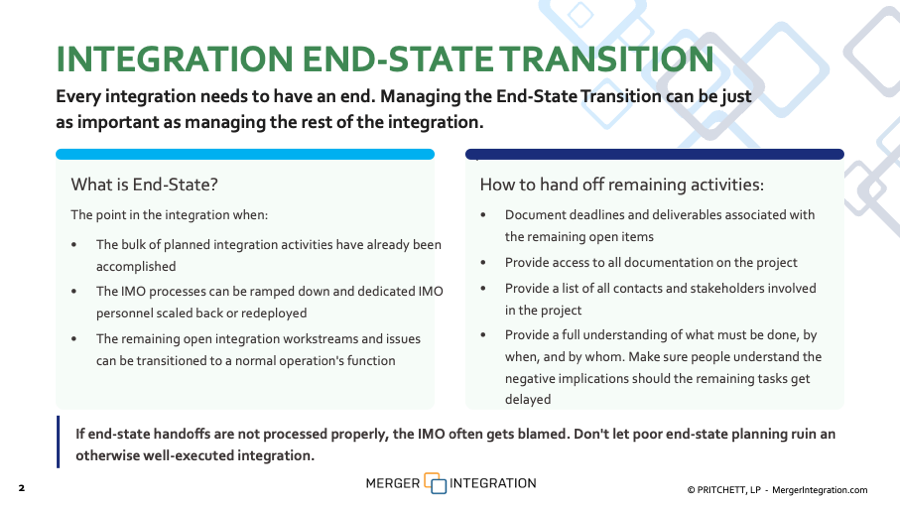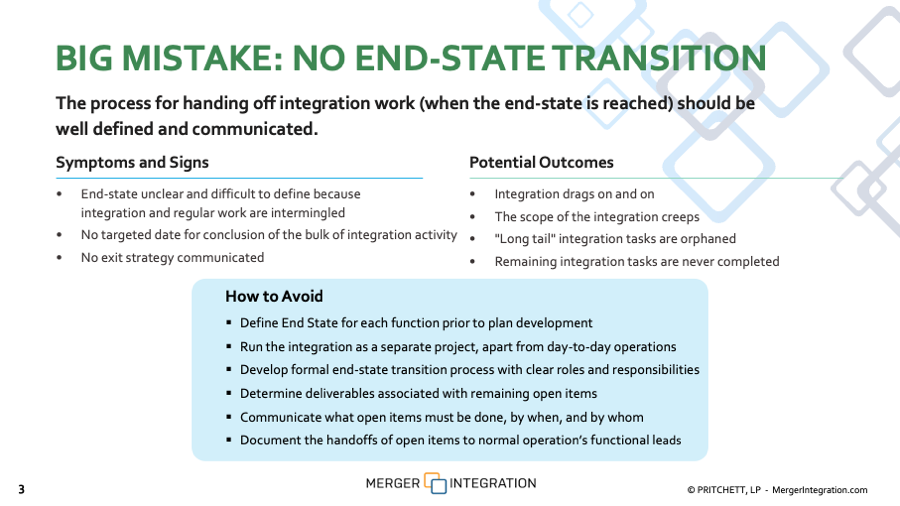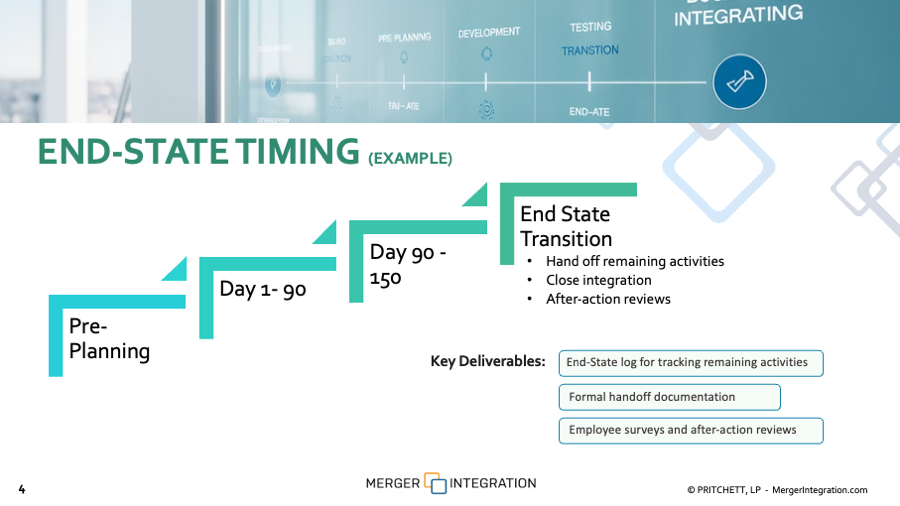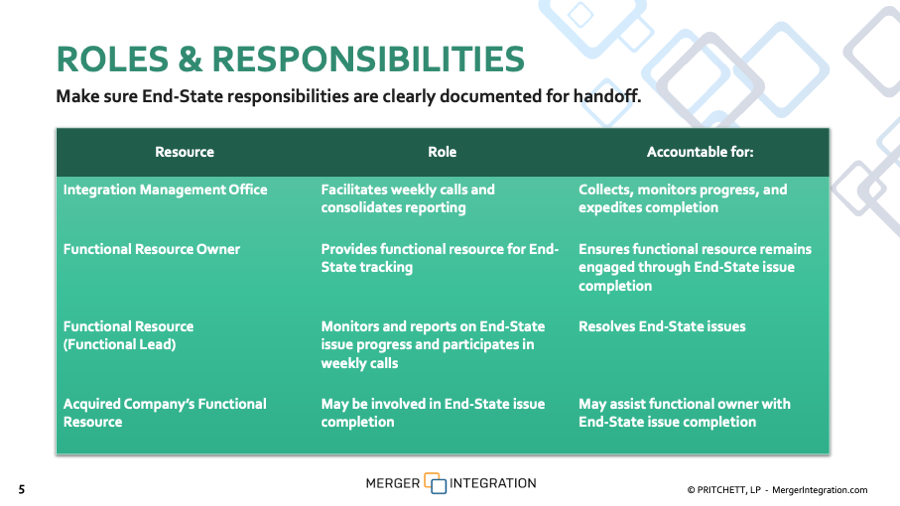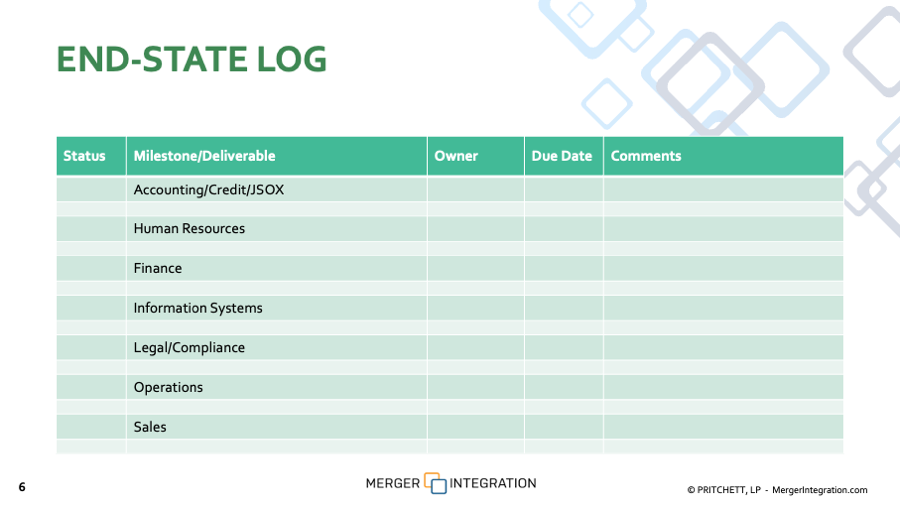INTEGRATION END-STATE TRANSITION
Every integration needs to have an end. Managing the End-State Transition can be just as important as managing the rest of the integration.
What is End-State?
The point in the integration when:
- The bulk of planned integration activities have already been accomplished
- The IMO processes can be ramped down and dedicated IMO personnel scaled back or redeployed
- The remaining open integration workstreams and issues can be transitioned to a normal operation's function
How to hand off remaining activities:
- Document deadlines and deliverables associated with the remaining open items
- Provide access to all documentation on the project
- Provide a list of all contacts and stakeholders involved in the project
- Provide a full understanding of what must be done, by when, and by whom. Make sure people understand the negative implications should the remaining tasks get delayed
If end-state handoffs are not processed properly, the IMO often gets blamed. Don't let poor end-state planning ruin an otherwise well-executed integration.
BIG MISTAKE: NO END-STATE TRANSITION
The process for handing off integration work (when the end-state is reached) should be well defined and communicated.
Symptoms and Signs
- End-state unclear and difficult to define because integration and regular work are intermingled
- No targeted date for conclusion of the bulk of integration activity
- No exit strategy communicated
Potential Outcomes
- Integration drags on and on
- The scope of the integration creeps
- "Long tail" integration tasks are orphaned
- Remaining integration tasks are never completed
How to Avoid
- Define End State for each function prior to plan development
- Run the integration as a separate project, apart from day-to-day operations
- Develop formal end-state transition process with clear roles and responsibilities
- Determine deliverables associated with remaining open items
- Communicate what open items must be done, by when, and by whom
- Document the handoffs of open items to normal operation’s functional leads
END-STATE TIMING (EXAMPLE)
- Pre-Planning
- Day 1- 90
- Day 90 - 15
- End State Transition
- Hand off remaining activities
- Close integration
- After-action reviews
- End State Transition
- Day 90 - 15
- Day 1- 90
Key Deliverables:
- End-State log for tracking remaining activities
- Formal handoff documentation
- Employee surveys and after-action reviews
ROLES & RESPONSIBILITIES
Make sure End-State responsibilities are clearly documented for handoff.
|
Resource |
Role |
Accountable for: |
|
Integration Management Office |
Facilitates weekly calls and consolidates reporting |
Collects, monitors progress, and expedites completion |
|
Functional Resource Owner |
Provides functional resource for End-State tracking |
Ensures functional resource remains engaged through End-State issue completion |
|
Functional Resource (Functional Lead) |
Monitors and reports on End-State issue progress and participates in weekly calls |
Resolves End-State issues |
|
Acquired Company’s Functional Resource |
May be involved in End-State issue completion |
May assist functional owner with End-State issue completion |
END-STATE LOG
|
Status |
Milestone/Deliverable |
Owner |
Due Date |
Comments |
|
Accounting/Credit/JSOX |
||||
|
Human Resources |
||||
|
Finance |
||||
|
Information Systems |
||||
|
Legal/Compliance |
||||
|
Operations |
||||
|
Sales |
||||


